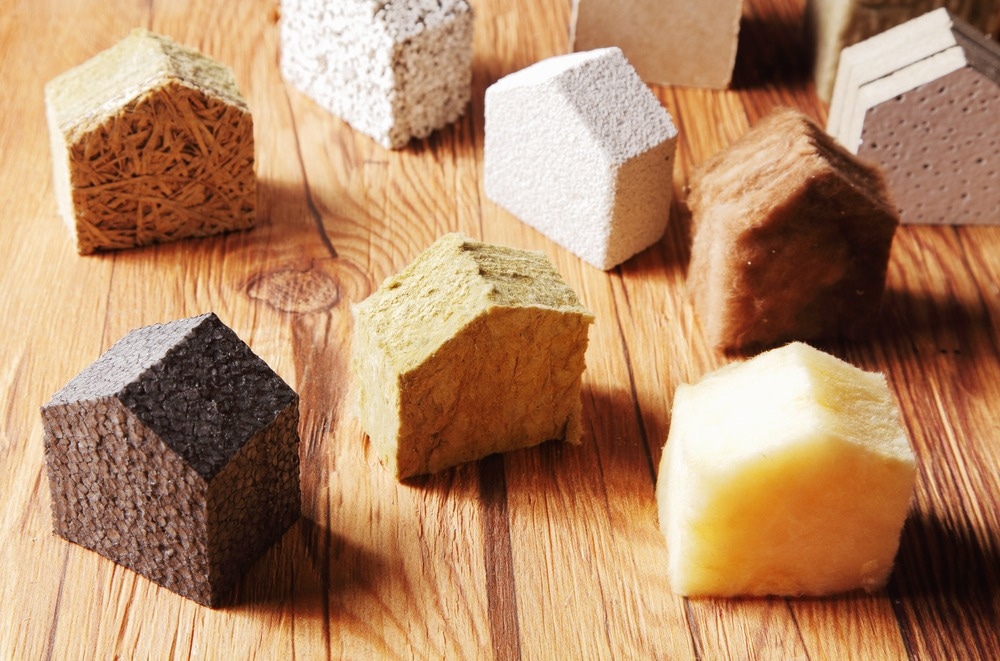An innovative building material called aerogel coating (AC) can help us reach our goals of lowering our environmental impact. The latest article published in ACS Materials Letters focuses on the development of a foamy AC with improved characteristics such as low thermal conductivity and fire resistivity.

Study: Economical Architected Foamy Aerogel Coating for Energy Conservation and Flame Resistance. Image Credit: stockcreations/Shutterstock.com
Role of Insulating Materials in Energy Efficient Buildings
To attain emission reductions and environmental sustainability, it is crucial to have buildings with effective fire protection. Long-term high energy efficiency now requires the use of thermal insulation materials that are also fire-resistant.
The existing heat insulation materials, such as mineral wool, glass wool, spray, polystyrene, and aerogel mats, are susceptible to and responsive to moisture, chemical products, temperature, illumination, or other factors, making it difficult to maintain low conductivity and fire resistance for an extended period.
Due to their excellent heat shielding and fire-resistant properties, thermoset polymer-based foams (such as modified epoxy foam) and aerogels stand out compared to most traditional materials. However, because these foams are frequently quite fragile, assembly and shipment can be extremely difficult.
Aerogel coating is a developing replacement substance for other prefabricated heat shielding solutions that can be sprayed considerably more freely. In general, by adding more inorganic additives like silica (SiO2) aerogel, fire resistance and thermal effectiveness can be increased. Typical aerogel coverings are often created by effectively combining polymers and SiO2 aerogel particles.
It has already been established that large aerogel granules (0.1-4 mm) produce a substantially better thermal-insulating covering. Large granules are, however, typically created using pricy and demanding drying procedures (such as supercritical drying), which compromises affordability.
Another practical method to lessen polymer infiltration is to use nonpolar polymeric substances as a binder, although this would cause debonding issues because of the ineffective adhesivity.
How to Fabricate a Thermally Insulating Aerogel Coating?
It is very possible to create an implemented aerogel covering with relatively low density and superior heat insulation by adding bubbles to the aerogel layer. The granules that remain on the internal layer of the bubble reduce the possibility of polymer matrix intrusion.
Fire-resistant melamine resin (MF) and SiO2 aerogel particles can be used to achieve fire resistance. Interfaces can have the aerogel covering applied to them by employing typical high throughput methodological approaches such as air spraying.
This foamy aerogel covering demonstrates the benefits of aerogel films in facile deployment and foams in heat retention as well as the superior fire resistance and inexpensive cost compared to other conventional heat insulators.
Research Findings
The pore size grew along with the SiO2 and polymer concentration as well as the progression of the wall constructions from a narrow necklace framework to a truss structure and finally to a thick skeleton. With a contact angle of about 150°, the foamy aerogel was determined to be extremely hydrophobic, making it particularly attractive for humid climates.
The foamy aerogel's observed thermal conductivity, which ranges from 27 to 50 mW m-1 K-1, was within the acceptable range for commercialized thermal-insulating substances. The aerogel outperformed numerous commonly used organic thermal-insulating substances in terms of heat release rate (HRR) and smoke production rate (SPR) due to the outstanding fireproofing of the MF polymer and SiO2.
Advantages
Even though many commercial aerogel thin-film products have similar constituent formulations, this aerogel coating is based on inexpensive water-soluble MF polymer and fine SiO2 aerogel particles, where cost is positively correlated with granular size. As a result, the cost is significantly reduced. It has significant economic potential for a variety of uses given the low cost of raw materials, ease of manufacture, and impressive capabilities.
Application in Consumer Electronics
The safety of electronic items (like batteries) against overheating is another area where this aerogel covering is particularly intriguing. Even if a battery's uniform covering is accidentally broken, the coating may still safeguard consumers and other electronics subsystems by minimizing the heat breakout.
In short, the coating would prove to be useful for future applications owing to its heat resistivity and cost-effectiveness.
More from AZoM: What is Glow Discharge Optical Emission Spectrometry?
Further Reading
Yu et. al. (2022). Economical Architected Foamy Aerogel Coating for Energy Conservation and Flame Resistance. ACS Material Letters. 4. 1453-1461. Available at: https://doi.org/10.1021/acsmaterialslett.2c00419
Disclaimer: The views expressed here are those of the author expressed in their private capacity and do not necessarily represent the views of AZoM.com Limited T/A AZoNetwork the owner and operator of this website. This disclaimer forms part of the Terms and conditions of use of this website.